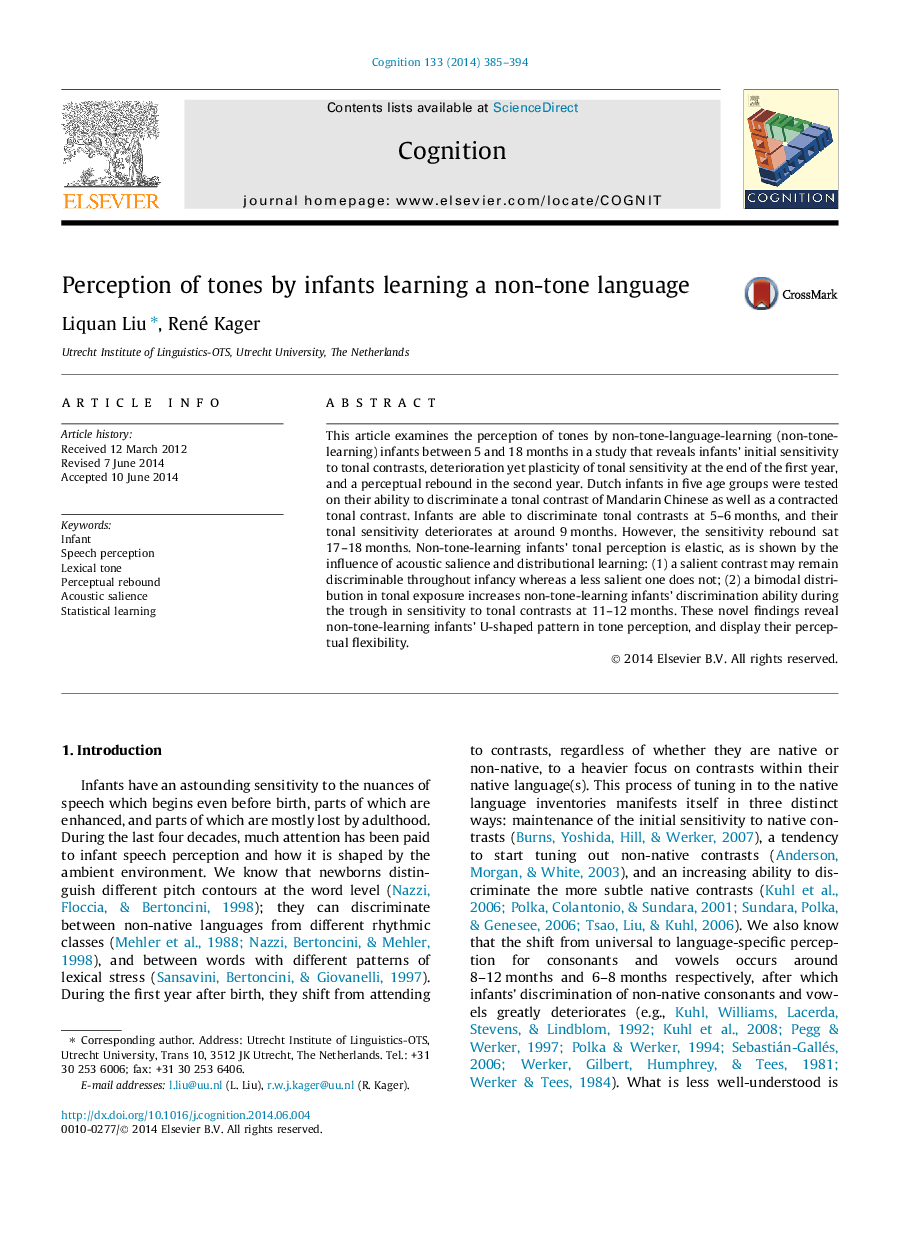| Article ID | Journal | Published Year | Pages | File Type |
|---|---|---|---|---|
| 10457506 | Cognition | 2014 | 10 Pages |
Abstract
This article examines the perception of tones by non-tone-language-learning (non-tone-learning) infants between 5 and 18Â months in a study that reveals infants' initial sensitivity to tonal contrasts, deterioration yet plasticity of tonal sensitivity at the end of the first year, and a perceptual rebound in the second year. Dutch infants in five age groups were tested on their ability to discriminate a tonal contrast of Mandarin Chinese as well as a contracted tonal contrast. Infants are able to discriminate tonal contrasts at 5-6Â months, and their tonal sensitivity deteriorates at around 9Â months. However, the sensitivity rebound sat 17-18Â months. Non-tone-learning infants' tonal perception is elastic, as is shown by the influence of acoustic salience and distributional learning: (1) a salient contrast may remain discriminable throughout infancy whereas a less salient one does not; (2) a bimodal distribution in tonal exposure increases non-tone-learning infants' discrimination ability during the trough in sensitivity to tonal contrasts at 11-12Â months. These novel findings reveal non-tone-learning infants' U-shaped pattern in tone perception, and display their perceptual flexibility.
Related Topics
Life Sciences
Neuroscience
Cognitive Neuroscience
Authors
Liquan Liu, René Kager,
